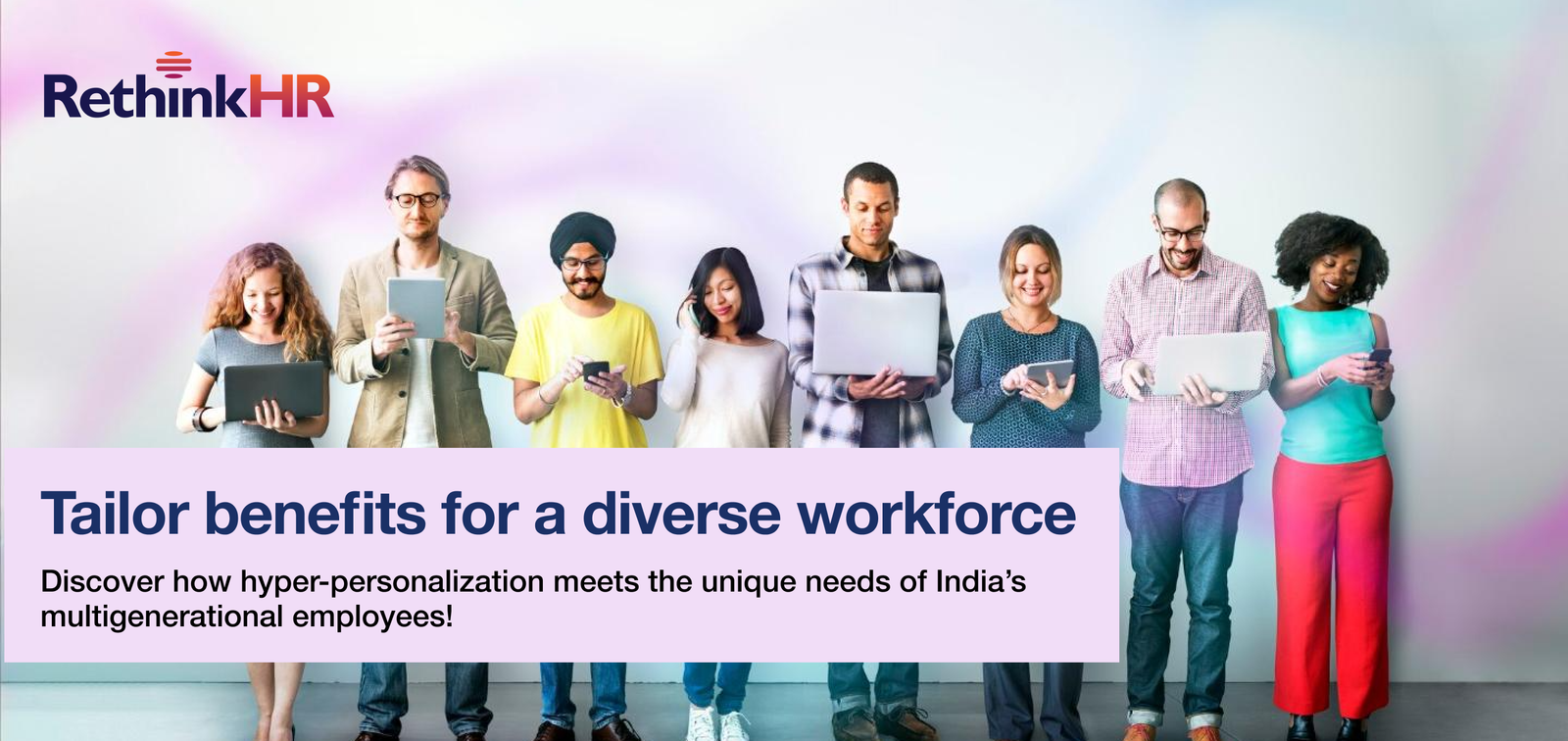In today’s dynamic work environment, Personalized Benefits are no longer a luxury but a necessity, especially when catering to India’s diverse, multigenerational workforce. This approach uses data and technology to tailor each employee’s experience to their unique preferences and needs. By offering Personalized Benefits, organizations can significantly boost employee satisfaction, loyalty, and overall engagement.
Understanding the Imperative for Personalized Benefits
India’s workforce comprises multiple generations—Boomers, Gen X, Millennials, and Gen Z—each with distinct priorities and expectations. A one-size-fits-all approach is not only ineffective but can also damage an employer’s reputation. Employees now seek Personalized Benefits that reflect their individual needs and aspirations, leading to a sense of belonging. As Mercer’s 2024 Global Talent Trends study reveals, employees are increasingly prioritizing the ability to customize their rewards packages.
Key Components of Personalized Benefits Programs
- Flexible Benefit Options:
- Providing a menu of options allows employees to select benefits that best suit their individual requirements. This includes health and wellness programs, financial planning assistance, and lifestyle perks like gym memberships or travel discounts.
- Autonomy in Reward Selection:
- Granting employees the autonomy to decide how they wish to be rewarded ensures that the rewards create genuine value for them.
- Personalized Recognition Approaches:
- Tailoring recognition to individual preferences, such as public praise for extroverts and private acknowledgments for introverted employees, demonstrates that the company values each employee’s unique contributions. Programs like “Moments of Recognition Every Day” (MORE) combine instant rewards with long-term acknowledgment.
The Pivotal Role of Technology in Delivering Personalized Benefits
Technology plays a crucial role in customizing employee benefits effectively.
- HRMS Integration: Storing employee data in human resources management systems (HRMS) eases the administration of customized benefits and allows for data-driven insights.
- AI-Powered Customization: AI can analyze employee survey responses, predict optimal benefits, and offer “smart search” options, making it easier for employees to navigate their choices. As Cisco’s analysis points out, AI-driven hyper-personalization is a transformative HR trend.
- User-Friendly Benefit Portals: Improved interfaces consolidate benefit information into easily accessible portals, enhancing the employee experience.
Implementing a Robust Personalized Benefits Strategy
- Gather Comprehensive Employee Feedback: Regularly collect data on employee preferences through surveys, feedback sessions, and one-on-one meetings.
- Offer a Wide Array of Benefit Options: Provide diverse benefits catering to various needs, including financial wellness, career development, and personal well-being.
- Ensure Transparency and Fairness in Benefit Distribution: Communicate clearly about how rewards are earned and administered, fostering trust and equity within the workforce.
- Leverage Technology for Efficient Management of Personalized Benefits: Utilize HR technology to streamline benefit administration and provide employees with convenient access to their options.
Navigating Potential Challenges in Personalized Benefits
- Addressing Perceptions of Preferential Treatment: Customizing rewards can create discontent if not managed transparently. Open communication is essential.
- Mitigating Data Privacy Concerns: Ensure strict compliance with data protection regulations and transparently communicate how employee data is used to personalize benefits.
The Future of Personalized Benefits: Trends to Watch
As highlighted by People Matters, hyper-personalization is the future. NatWest India reframes hybrid work as “in-person collaboration,” balancing flexibility and engagement. DBS Bank’s “wellness wallet” exemplifies pioneering personalization, allowing employees to curate their own benefits. As we move toward 2025, expect to see:
- Increased AI Integration: AI will drive deeper personalization, predicting needs and providing tailored recommendations.
- Holistic Well-being Focus: Expect a greater emphasis on mental, physical, and financial health benefits.
- Voluntary, Employee-Paid Benefits: More companies will offer options like pet insurance and legal assistance.
Conclusion
By embracing Personalized Benefits, organizations can cultivate a supportive environment that values each employee, fostering a resilient, engaged workforce ready for the future. As organizations innovate, remember that while technology drives the shift, a human touch remains essential. By combining digital tools with meaningful benefits, companies build environments that value each employee.

